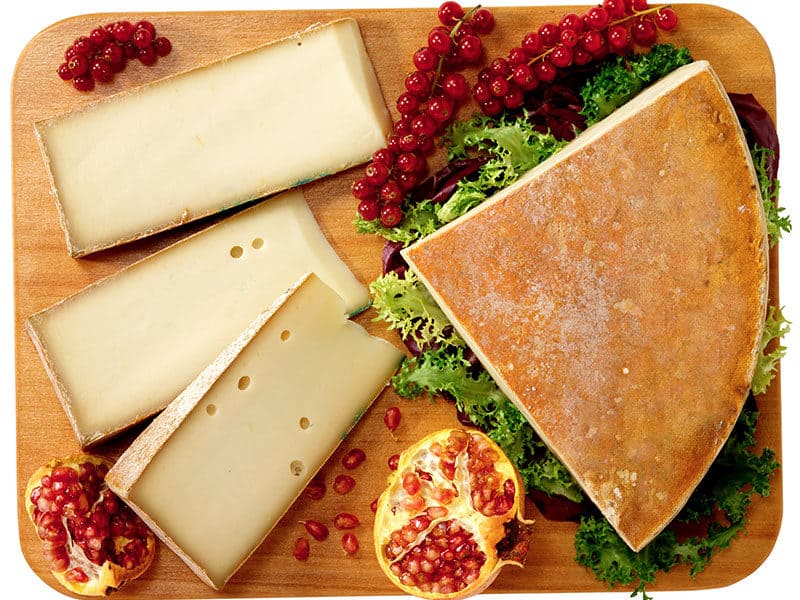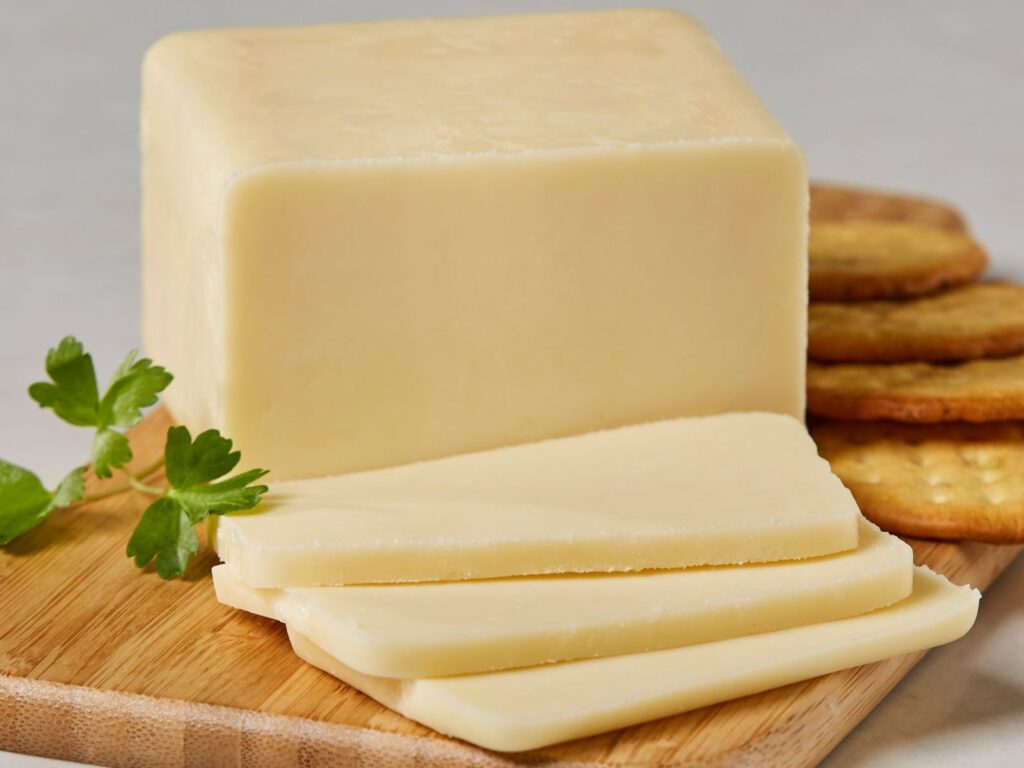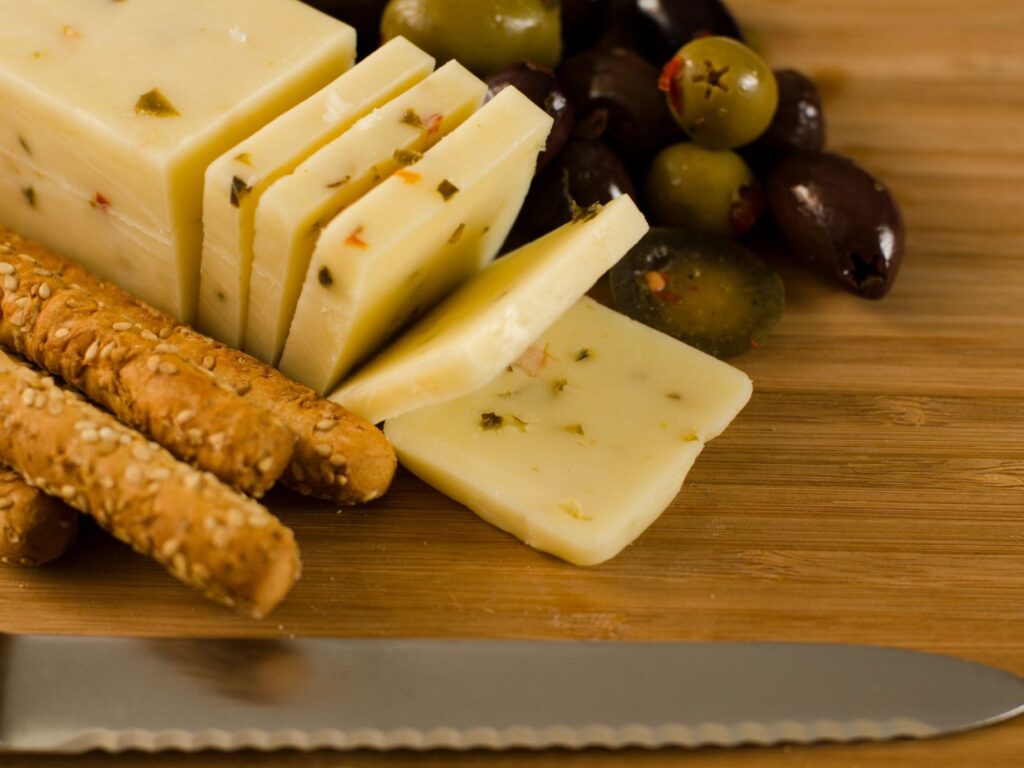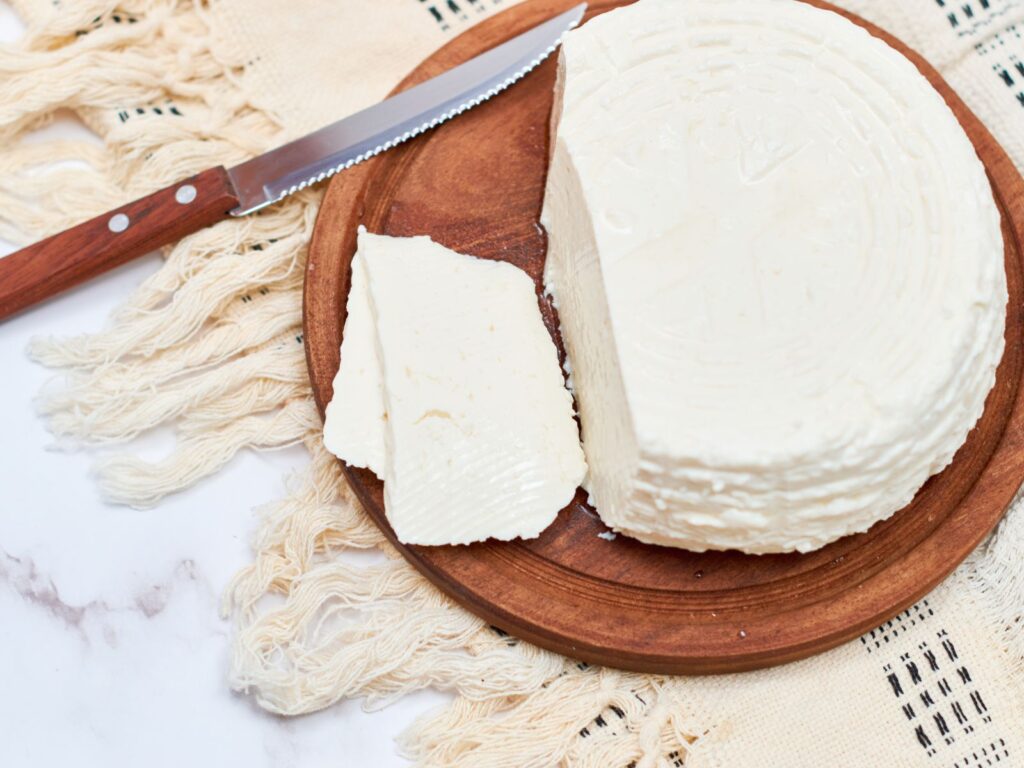In many ways, Fontina is Italy’s version of Raclette. Read on to learn all about this mountain-style melter. In this post, we will cover its origins, flavour and how best to serve it.

Where does Fontina come from?
Fontina cheese is a pressed uncooked, cow’s milk cheese that originated in the Aosta Valley of Italy. It is made from whole or partially skimmed milk and is aged for at least three months. Overall, this classic Italian cheese has a natural, rind that is thin and smooth, and the interior is ivory to pale yellow in colour.
There are two types of this cheese: the traditional Fontina Val d’Aosta and a more generic version produced in other parts of Italy. The traditional Fontina Val d’Aosta is protected by the European Union’s protected designation of origin (PDO) and can only be produced in the Aosta Valley. Undoubtedly, this cheese has a stronger flavour and a more complex taste than the cheeses produced elsewhere.
How is Fontina made?
The production of this mountain cheese requires the use of raw milk and a traditional method of production. The milk is heated to a temperature of 32–36 °C (90–97 °F) and then rennet is added to coagulate the milk. The curd is then cut and cooked at a high temperature, before being placed into moulds and pressed. Traditionally, an affineur will age their wheels for a minimum of three months.
The flavour of Fontina Val D’Aosta is nutty and fruity, with a slightly sweet and tangy taste. As it ages, it becomes more pungent and has a stronger, more pronounced flavour. Moreover, its texture is smooth and creamy, with a slight elasticity.
How to serve Fontina
Fontina cheese is commonly used in cooking and is particularly well-suited for fondue, as it melts easily and has a rich, creamy texture. It is also often used as a topping for pizza, as well as in pasta dishes, sandwiches, and omelettes.
Fontina is also a versatile cheese that can be paired with many different types of food and drink. Indeed, it pairs well with wine, beer and even champagne. Moreover, you can serve this pressed cheese with fruits such as apples, pears, and figs or nuts such as almonds, hazelnuts, and walnuts.
Thank you for reading
Thank you for reading this post about yet another amazing artisanal cheese. Have you tried this cheese before? Drop us a comment below with your thoughts.
If you enjoy learning about new cheeses, you can subscribe to our newsletter below. You will hear from us about once a week as we share new cheese profiles with you.
Finally, keep scrolling to find some more cheeses and recipes that have been recommended for you. Keep it cheesy!



